"There's nothing that cleanses your soul like getting the hell kicked out of you."
-Woody Hayes
There's no doubt that we lucked out when it came to the formation of our Solar System.
Our inner Solar System, where temperatures are ideal for liquid water and life-as-we-know-it, is full of rocky planets and devoid of any gas giants for many hundreds of millions of miles. But, as we know all too well from the last twenty years of finding exoplanets, this isn't the only way it could have turned out.
In fact, of the some 2,300 planets found around other stars so far, the vast majority of them are either very, very hot, very, very large, or both.
This could just be due to the fact that those types of planets are the easiest ones to find with the technology and techniques we have available to us right now, and we may wind up finding more solar systems like ours. What seems most important, at least as far as the search for extraterrestrial life (or possibly habitable exoplanets) goes, is looking for rocky planets where the temperature is right for liquid water.
And every star has a region around it where that's possible.
But although we've found a small but important number of stars with rocky planets that live in their habitable zones, there's one type of exoplanet system that never has a rocky planet in their habitable zones.
Not only that, but they -- at least so far -- never have any other planets in their solar systems! What gives?
Over in our Solar System, we've got our rocky worlds interior to all of our gas giants, with an asteroid belt interior to the giant planets, and a kuiper belt exterior to our four Jovians. But in systems where there's a Hot Jupiter, or a gas giant very close to its parent star, we don't find any other planets anywhere near the star itself.
Why is that?
When you bring a large-mass planet into close quarters with a much smaller one, something's got to give. Because of the way gravitation works, you're going to have a three-body gravitational interaction, which is one of the most difficult theoretical problems in all of physics.
But universally, what's going to happen is that there's going to be a transfer of momentum and angular momentum, and one of three things is going to happen. Either:
- The large planet will gravitationally capture the smaller one, turning it into a moon,
- The large planet will fling the small planet either violently into its Sun or violently out of the Solar System, or
- The large planet will collide with the small one, effectively eating it.
In other words, these Hot Jupiters are like the psychotic eldest child that murders its younger siblings! We see that there are no rocky planets among the gas giants in our Solar System for exactly this reason. But how does this work, and why does this prevent solar systems with Hot Jupiters from having habitable planets outside of them? This is not obvious, so let me first set up the situation for you to help you get a handle on it.
As far as we understand it, all solar systems start out the same way in the very early stages: there's a central region where a star forms, accompanied by a proto-planetary disk, which will coalesce and form into planets.
But over time, planets clear the space around them. They do this, believe it or not, in the same way that star clusters all eventually end up dissipating: simple gravity. Watch this simulation of a star cluster to see what I'm talking about, and pay particular attention to the first 25 seconds of the video.
Notice how an occasional star just sped off from the star cluster in a random direction, even early on in the simulation? That's what gravitational encounters between more than 2 bodies do, pretty much all of the time! The physical process is called violent relaxation, which is a wonderful term that (somehow) no enthusiast has created a wikipedia entry for!
Just as the structure of the star cluster changes because of these gravitational ejections, the structure of the young solar system changes because of its gravitational interactions. These large planets can migrate, depending on how they absorb or remove each tiny mass they encounter. Some encounters move them closer towards their parent star, others move them farther away. In the case of Jupiter and Saturn, they were once significantly closer to the asteroid belt than they are today; in the case of Hot Jupiters, they clear out at least the entire habitable zone!
According to research led by Eric Ford, the reason we haven't found any of these habitable, rocky planets around stars with Hot Jupiters -- even though we've found 63 of them around other stars -- is because Hot Jupiters perturb the orbits of these planetesimals in the young solar systems sufficiently so as to completely clean them out, leaving no possible rocky worlds behind!
In our Solar System, our four gas giants completely cleared out the regions between about 4 Astronomical Units and about 30 Astronomical Units, where one of them is the distance between the Earth and the Sun. But if you put a Jupiter-sized planet anywhere in the inner Solar System, then all of the rocky planets wouldn't be here!
And that's why systems with exoplanet bullies in them -- Hot Jupiters, to be specific -- have no Earth-like planets in them, or rocky worlds with the proper temperatures for water. That's just one more example of the power of gravity!



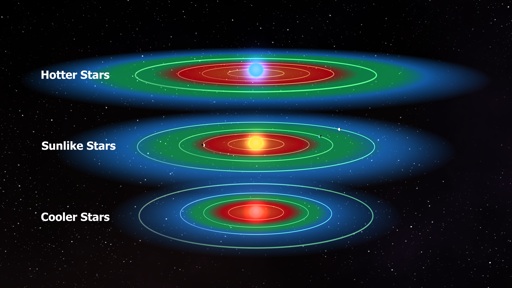

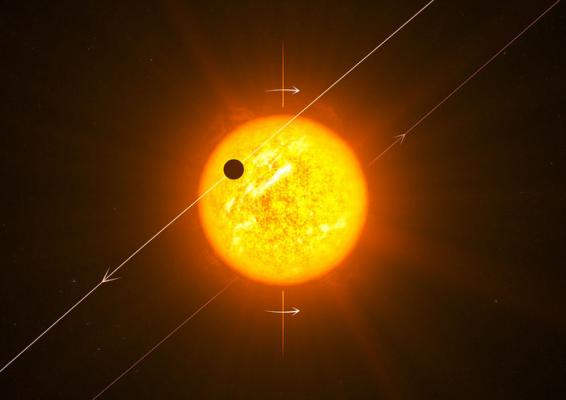
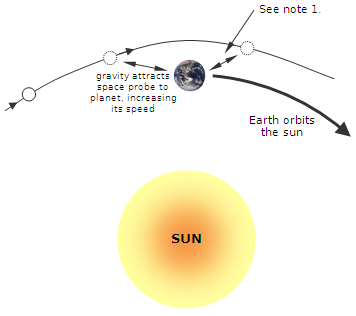
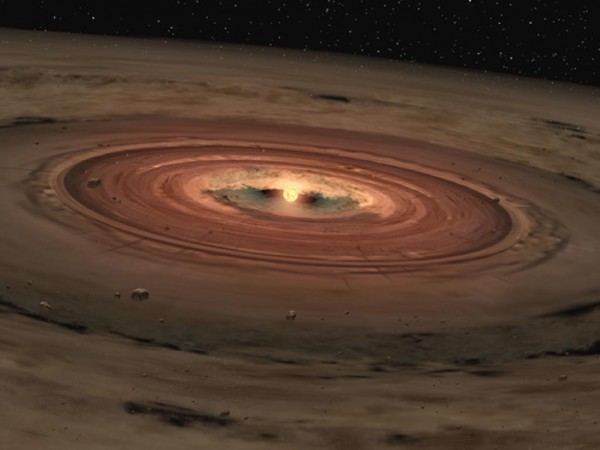
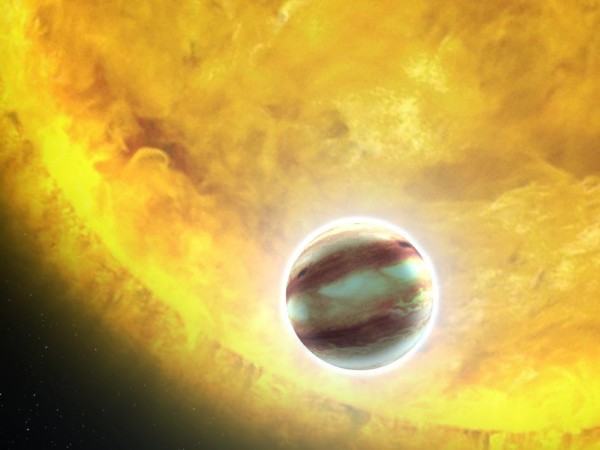

That is definitely interesting but could not a "Hot Jupiter" in the habitable zone possibly have rocky moons that could sustain liquid water?
Following up with Luke's question, based on observations, how many "temperate Jupiters" have been found out of the crop of exoplanets, and would we expect this count to be affected by measurement bias? Could the wobble method find a temperate Jupiter?
Another related observation/question....
We have some pretty strong evidence from our own solar system that the lack of a magnetic field will kill the chances of intelligent life on a Mars-type planet, thanks to the solar wind. Can the magnetic field of a temperate Jupiter protect it's moons (or captured planets) from the solar wind if the moon has no magnetic field?
Would Jupiter have been able to protect Mars if Mars were orbiting Jupiter at Mars' current distance from the sun?
Would added star mass help or hurt the cause? Bigger starts will have a stronger solar wind, but the habitable zone is also much farther out.
Excellent article.
@RowdyReptile(3)
The short answer is no. A gas giant's magnetic field would not protect its moons. The host planet's magnetic field actually make things tougher for land based life on their moons.
The first problem is the solar wind pushing the magnetic envelope of protection into a comet-like shape away from the planet. Any moon would get the full force of the solar wind whenever passing between the planet and the star.
The second and arguably larger problem is magnetospheres capture radiation. Moons around such planets would be subjected to significantly more radiation than if they were just orbiting the star with no protection at all.
The first of Denier's points regarding moons of magnetized planets is not quite correct. The Earth's magnetic field stands off the solar wind at a typical distance of ~10 Earth radii, and even during exceptionally strong disturbances the front side of the magnetosphere will extend at least 5-6 Earth radii. Jupiter has an even stronger magnetic field, which couples with the planet's rotation to produce a magnetodisc of plasma that corotates with the planet. The front side of Jupiter's magnetosphere is ~ 100 Jovian radii from the planet. Outer moons will still pop out into the solar wind, but the Galilean satellites remain inside Jupiter's magnetosphere at all times. The other gas giants in our solar system have magnetic fields which, while not as strong as Jupiter's, are strong enough to stand off the solar wind at between 10 and 100 planetary radii. Mercury is the only magnetized planet in our solar system whose magnetic field is not strong enough to consistently stand off the solar wind at a distance larger than its radius.
His second point, about the trapped radiation (energetic charged particles, really), is entirely correct. Jupiter's radiation belts make Earth's Van Allen belts look like a walk through the park.
There is one obvious way out of the problem: if the moon has its own magnetic field which is strong enough to stand off the effective wind from the planet's rotation, the moon will be at least partly protected from the trapped radiation. (Which is all you can ask for; some particles are energetic enough to not be deflected by the Earth's magnetic field, or enter the cusps of the magnetic field, where they can reach the ground directly.) Ganymede does have an intrinsic magnetic field, though I'm not sure it's strong enough to offer such protection.
Can you imagine living on a hot gas planet moon, maybe with a nice ecliptic orbit and a good tilt on the axis? That civilization would probably develop the slide rule before the wheel just to keep all the light and dark periods straight.
"if the moon has its own magnetic"
Io has one. Or at least the idea it has a salty ocean under the ice is explained by the existence of a magnetic field.
I don't have that good a telescope to check myself.
@Wow(8) I think you are mixing Europa with Io.
Say if Jupiter were very near the sun, would the planet remain a gas giant, or will the atmosphere of the planet be just blown away due to the close proximity, basically leaving a rocky core if any?
I felt Gas giants will basically not remain gas giants if they were too close to the star.
Our atmosphere isn't blown off, and we only have 1 g gravity. Why would the atmosphere of a gas giant with 2 or 3 times the gravity at the surface lose its atmosphere, unless it has no magnetic field and the solar wind can strip gases?
Slight correction (and I know what you meant, but that wasn't what you said).
The three body problem isn't one of the most difficult problems in physics (the four body problem is more difficult), rather the three body problem is one of the simplest problems that is completely intractable.
"@Wow(8) I think you are mixing Europa with Io."
Now that you say Europa, I realise you're right.
Goddammed associative arrays...
:-)
re:10 "close" would be defined by whether the solar wind is enough to make the gas leave orbit or not, therefore somewhat tautological!
A gas giant could be a lot further in than an earth-weight planet and keep its atmosphere.
Mars is quite a bit smaller and one reason it has little atmosphere, despite begin further away (therefore less liable to lose atmosphere) because it is so much lighter than earth.
But the Moon has even less mass, is further in and far, far less atmosphere than Mars.
Titan has much more atmosphere.
I guess to sum up: it's complicated.